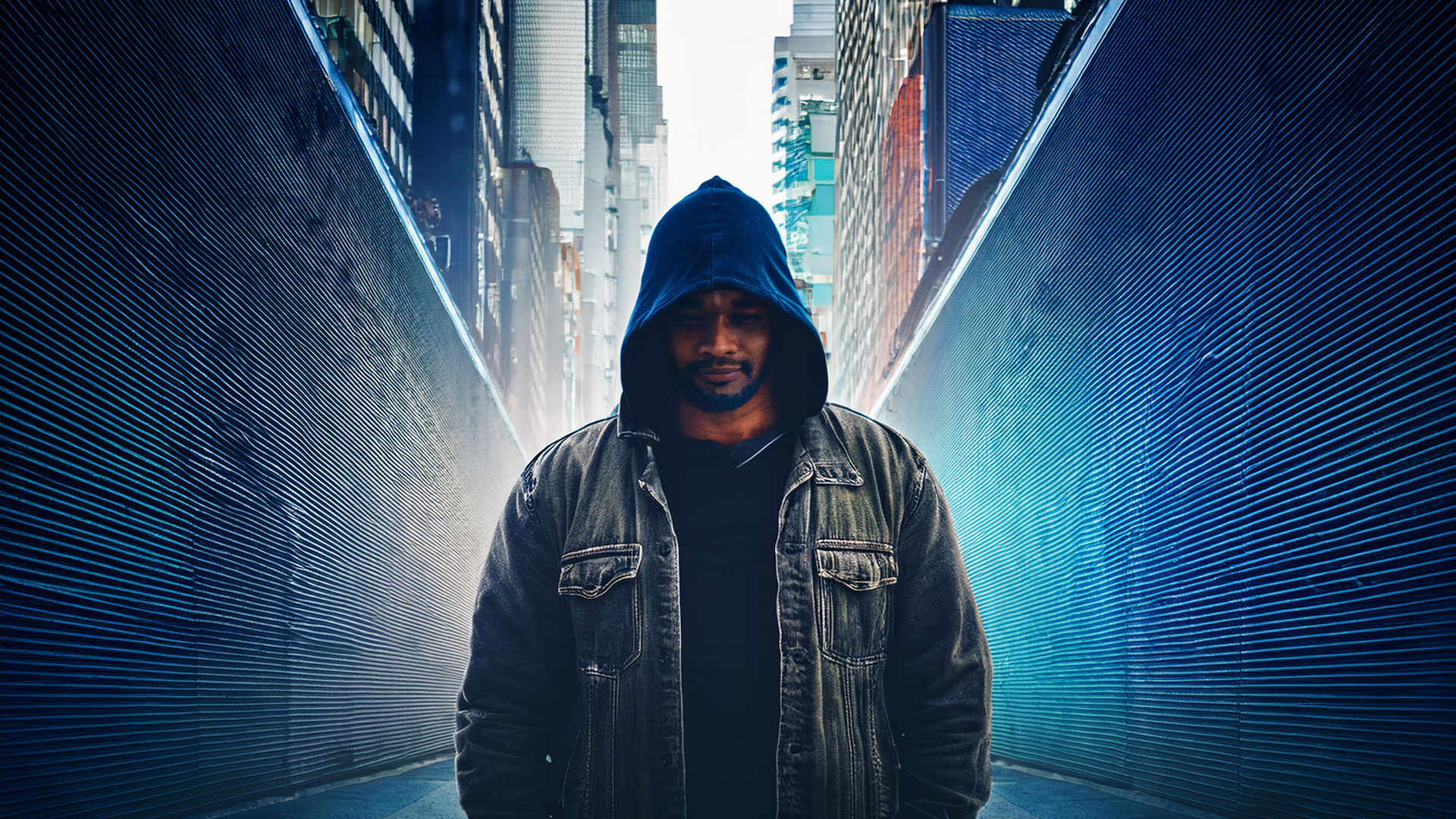The First Lessons of Judgement
Sometimes, at first sight, people don’t like you. Their eyes slide past you. Their smiles stop short. When you are in school, other kids’ mistakes earn chuckles or soft reminders. Yours earn sharp inhales and narrowed eyes. You trip in gym class, and laughter follows you for weeks. You cross the street. Cars speed up. They want you gone.
At home, a single wrong word or a spilt drink snaps the air in half. A slap. A belt. A door slams hard enough to say, ‘you are the problem.’ No apology follows, just: “That’s what you get.” “That’s how life works.” Or worse, silence. You swallow the blame. There is nowhere else for it to go.
When a teacher beams at the right answer, or your parent’s face hardens at the wrong tone of voice, a lesson is formed: Some things are right and some are wrong. By adolescence, you observe the rules of “rightness.” If something is praised, it’s right; if society says it is wrong, it is. We see through the lens of our peers because they taught us how to see in the first place. What society thinks is correct. As a society, we apply ‘worth’ to things.
So, you watch people, celebrities, important people, rich people, happy people, noticing how a single glance defines ‘cool.’ You practice the same tilt. You consider everything for effect: the casual way you sit on a chair, the brightness of your CV headline. You smile with your mouth closed. You monitor your laugh for volume and timing. You rehearse your greetings.
Heuristics and the Economy of Mind
Luckily, media, advertising and peers remind us, constantly, of what’s worth paying attention to, and who to be. The problem is, there’s too much information. No one can keep up. We’re exposed to more data daily than previous generations encountered in months.
So the mind adapts. To survive the flood, it does something brilliant: it simplifies. Our brains cut corners—using heuristics. Heuristics are adaptive, experience-based mental shortcuts—fast and efficient strategies that simplify decision-making. Rather than analysing every detail and calculating every possibility, the mind leans on familiar cues and patterns, which reduces cognitive load.
They’re not always accurate, but they’re mostly functional. If something feels true, it often becomes true enough to act on. It’s efficient. Necessary, even. But in the modern world, heuristics often struggle to keep pace with the complexity and velocity of information. They fail to account for second-hand distortions introduced by media and peer interference. Shortcuts compress data. They erase nuance, trading precision for speed.
Bias is a side effect of heuristic compression—systematic patterns of deviation from rationality in judgment or decision-making. Bias shapes how we interpret events, evaluate choices, form beliefs, and develop personality, typically without conscious awareness.
Scripts and Stereotypes
People don’t just form judgments. They form narratives—stories about the world, about others, about you. Complexity is too exhausting. Stereotypes reduce your complexity into something predictable.
Collective biases form when cognitive distortions converge across individuals and are reinforced through social dynamics. As these patterns align, individual biases synchronise into group-level defaults, creating the appearance of consensus—even when grounded in distortion.
From the moment you enter public consciousness, you’re handed a script. For some, it’s loose, flexible, forgiving. For others—especially those marked by race, class, disability, or history—these narratives come laced with centuries of cognitive bias: deeply embedded shortcuts that flatten complexity into assumption.
Studies of racialised emotional expression reveal that, if you are a Black man, your expressions of anger are more likely to be perceived as dangerous, forcing you into one of three roles:
Role 1: The Threat
Accept the narrative of threat and volatility—and use it as a weapon, risking backlash even as it suffocates you. This role is short-lived.
Role 2: The Prophet
Speak out against the false narrative—making yourself a larger target for judgment as you do so.
Role 3: The Token
Be the soft-spoken model of patience who contradicts the stereotype, suppressing genuine emotion. You bury the real you—sarcasm, silence, stoicism, art.
Denied normal catharsis like crying or venting, unspent emotion builds—fueling anxiety, depression, or somatic disorders. When the mask cracks, they blame you, not the pressure they placed on you. Your grief is pathologised. Your exhaustion is called laziness. The stereotype is reinforced: a “volatile” Black man who can’t manage his feelings.
The Loop of Erosion
The Armour of Bias
For the judge, biases create the illusion of certainty and control, anchoring a fragile sense of self. People resist letting go of prejudices not because they’re unaware, but because in a world of overwhelming information, nuance feels dangerous. Letting go would mean admitting uncertainty—and vulnerability. For many, that’s simply too threatening.
Others need you to confirm their worldview. Your pain, your anger, your nuance—it threatens the story they’ve chosen to believe. Call out the falseness, and you’ll be labelled “angry,” “ungrateful,” or “paranoid.” Society reacts negatively to parts of who you are not because they’re wrong, but because they don’t fit the shortcut.
The Misalignment
They don’t know what it feels like to be you—they haven’t lived your traumas, hungers, rhythms, or joy. Their advice might sound reasonable, but it’s built on assumptions that don’t fit your inner reality. They Don’t Know What You Need.
The Consequence of Consensus
The agreement no longer reflects truth or purpose—it reflects fear. Insight becomes a popularity contest. Independent thought withers, and the consensus itself becomes contaminated.
Coerced conformity fractures minds and communities, reinforcing power hierarchies through cognitive shortcuts that equate sameness with safety. Complexity becomes a threat; choice dissolves. As we navigate by consensus, we inherit others’ projections and fear.
Judgment distorts reality; it muddies the waters just when you need clear sight. You can’t think clearly when your survival depends on being seen the right way. These external pressures rewrite self-perception, eroding confidence and constraining growth.
Social-psychology research on stereotype threat shows that merely reminding women of gendered math stereotypes undermines their performance.
Discrimination, cancel culture, and moral absolutism crush not only dissent but also the diversity of thought that sustains innovation and resilience. It’s a self-reinforcing cycle that inflicts real harm on those already pushed to the margins.
The Illusion of Moral Certainty
To truly justify a moral judgment, one would need to know someone’s every wound, every hope, every fear—along with the arc of their personal growth and systemic ripple effects. To judge legitimately, you must be all-knowing. But we’re not.
So we lean on heuristics—fast, emotionally charged shortcuts that collapse complexity into snap verdicts. We mistake those verdicts for truth. “If everyone agrees, it must be right,” we tell ourselves—though the voices we follow lack the depth to see the full picture.
The Maze of Survival
Whichever choice you make in response to judgment, you are not free. You navigate a maze built by someone else—glass walls, a supposed straight road. Every adaptation you make becomes the next reason to judge you. Bias compresses you into a role; your behaviour “proves” the bias that confined you. The result is collective blindness—a sunken place of discontent and conflict.
Fog and Fracture: When Consensus Fails
Reality doesn’t follow scripts. People change. Circumstances evolve. Context matters. Unanimity obscures the contours of reality like fog settling over a city. The road beneath disappears. You know the streets are still there, but you can’t find your footing.
When you make a mistake, consensus and rigid moral codes abandon you. Your heuristic system collapses under complexity’s pressure. Judgment, once hailed as the beacon of right and wrong, reveals itself as a barrier to genuine understanding and growth.
You find yourself injured, uncertain, adrift in a fog of quiet disorientation, asking, “What do I believe when the chorus is against me?”
Reclaiming the Unseen Self
Then there is silence—the kind that asks you to finally listen. Heuristics and snap reactions lose their grip when we stop feeding them attention. You start to remember things you had buried: the way your voice used to sound. The rhythms of thought that felt like your own. The parts of you that needed no witness to feel real.
In that stillness, something sacred returns: sight. Not just being seen—but seeing. Complexity reveals itself without distortion or apology. Solitude with your thoughts isn’t loneliness; it’s nourishment. It’s where understanding takes root. Clarity is an inner practice you can tend like a garden.
You begin to prune what was planted in fear. Letting go of judgment dissolves distortion. You don’t ignore problems—you encounter them: observing facts, testing assumptions, adapting your approach. What works? What helps? What moves life forward? Action becomes your compass, and it doesn’t need consensus.
You stop asking who you’re allowed to be. You start asking what you value, what you feel, what you want to rebuild. You water what grows in truth—without apology and without permission. Not all of it is pretty. Not all of it is welcome. But all of it is yours. This practice isn’t about enlightenment; it’s about building the capacity to choose your perspective. Again and again, breath by breath, you return—to you.
The Practice of Witnessing
When we slow down enough to witness our thoughts without immediately reacting, we begin to see how deeply we’ve internalised judgment—both from others and toward ourselves. Of course, social pressure still tugs at us; old habits die hard.
You might feel a flicker of panic when you resist a critical impulse or refuse to tailor your words for applause. That tug is real. But mindfulness trains the mind to pause—to create space between impulse and action, between perception and projection. Seeing clearly is easier and far more freeing than chasing approval.
When you trade “Did they like that?” for “Does this make sense?”, you reclaim energy once wasted on performance and redirect it toward purpose. Choosing clear sight over urgent consensus lightens your psychic load.
Beyond the Frame
This is your launch point. This is the beginning of your own hero’s journey—one shaped not by escaping judgment, but by transcending the need for it. Not for compliance or rebellion, but for authorship. You carry this clarity into every conversation, every decision, every moment you face doubt. The shift unlocks tangible rewards.
Mental health improves as self-criticism fades and practical empathy follows. Instead of reacting emotionally to someone’s behaviour, you seek to understand the context that shaped it—creating space for genuine connection. As a by-product, you model this shift: your calm confidence and practical empathy inspire those around you. In doing so, you seed systemic change—one act of self-determination at a time.
Personal insight, when paired with healthy community feedback, becomes a co-creative process of truth-making. Conversations become more constructive. Creativity flows. By choosing awareness over judgment, you light the path for others to follow, co-creating a society where clarity and empowerment are the shared norm.




